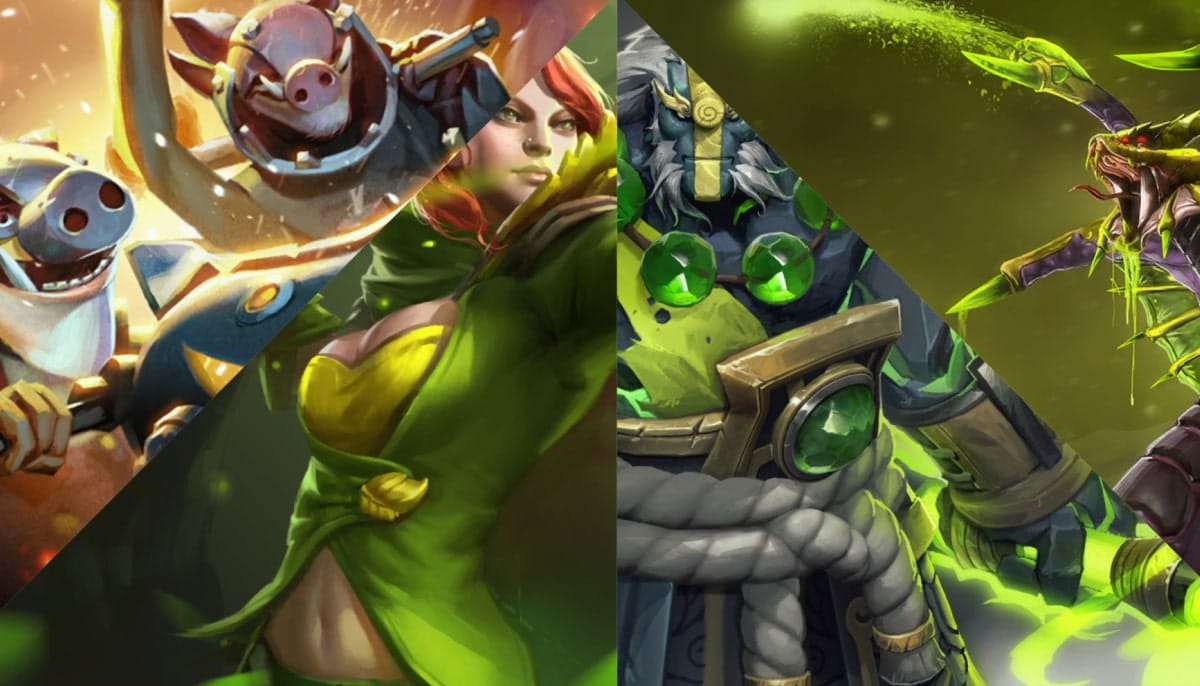
TL;DR
- The Soft Support, or position four, sets the tempo of the game by pressuring the map and objectives.
- The best soft supports can secure kills, contest objectives, and farm quickly during downtimes.
- Responsibilities of both supports can overlap in pub games, but an active soft support can win more games.
The two support roles in Dota 2 have many overlapping responsibilities, especially in pubs, but knowing the difference between the two can make every game much smoother. Unlike hard supports, position fours take a slice of farm and experience to roam, secure runes, pressure lanes, and start fights with your mid and offlane.
They’re an extremely active role and the most flexible in terms of heroes and builds. This tier list ranks the soft supports in the current meta for pub games, so that you can dictate the tempo in your ranked DOTA 2 games.
Dota 2 tier list explained
As with all tier lists, this will heavily favor heroes who are the flavor of the patch, displaying high win rates across a decent pick rate. In a game as complex as Dota 2, many factors can go into influencing which of the Dota 2 heroes are top tier, including buffs, nerfs, pro players, synergies with common heroes and items, and more.
This tier list will try to stay grounded within the strength of the soft support, but these factors will still come into play. Lastly, many heroes overlap with hard supports or other roles, but the tier list will prioritize their effectiveness as a position four. For more, we recommend checking out our explainer on the Dota 2 roles and how Soft Support compares.
How our Soft Support tier list was compiled
- S-Tier: Best of the patch. Top-impact picks with high win rates and low execution tax; fit almost any draft and reliably swing games.
- A-Tier: Staple picks. Strong, consistent heroes, excellent in most pub scenarios.
- B-Tier: Average or situationally strong. Viable with the right lanes or synergies, effectiveness varies by lineup and player comfort. Below-average win rates.
- C-Tier: Weak or for skilled specialists. Niche picks that require advanced execution, specific counters, or ideal drafts to shine. Good heroes, but are better as hard support.
- D-Tier: Not recommended. Underperformers this patch: narrow use cases, poor pub reliability. Avoid during ranked games.
The tier list is tailored towards Dota 2’s most recent patch and pro play trends. Valuable data, such as pick and win rates, are from sites such as dotabuff, spectral.gg, and dota2protracker
Position 4 tier list in brief
| Tiers | Champions |
|---|---|
| S | Spirit Breaker, Snapfire, Shadow Shaman, Clockwerk |
| A | Earthshaker, Bounty Hunter, Nature’s Prophet, Hoodwink, Vengeful Spirit, Dark Willow, Lion, Silencer, Skywrath Mage, Venomancer, Shadow Demon, Mirana, Phoenix |
| B | Rubick, Marci, Weaver, Jakiro, Ringmaster, Pugna, Oracle, Muerta, Elder Titan, Pudge, Tusk, Nyx Assassin, Ancient Apparition, Disruptor, Grimstroke, Batrider, Ogre Magi, Bane, Omniknight, Witch Doctor, Leshrac |
| C | Tiny, Dawnbreaker, Invoker, Zeus, Tinker, Undying, Winter Wyvern, Earth Spirit, Techies, Treant Protector, Dazzle, Lich, Windranger, Queen of Pain, Io, Enchantress, Abaddon, Crystal Maiden, Magnus, Enigma, Keeper of the Light, Chaos Knight, Warlock, Chen |
| D | Monkey King, Riki, Visage, Alchemist, Primal Beast, Naga Siren, Terrorblade, Slark, Sniper, Axe, Ember Spirit, Huskar, Puck, Gyrocopter |
S-Tier: Must Picks
Spirit Breaker, Snapfire, Shadow Shaman, and Clockwerk define what it means to be an effective position four in the current meta. These heroes constantly pressure the map with their high kill potential that’s easy to execute.
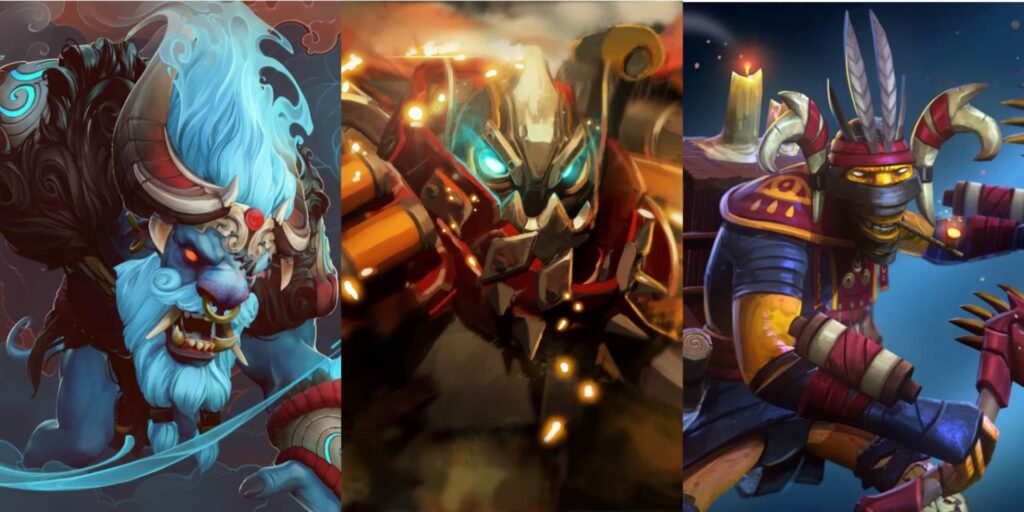
Spirit Breaker, Snapfire, and Clockwerk guarantee the kill with a teammate since their combo does so much on its own without any item investment. They’re oppressive when they can get early kills and snowball the lead with good vision and aggressive movements.
Additionally, Snapfire synergizes well with most of the meta offlaners, especially ones that can set up her devastating ultimate.
Shadow Shaman is simply the best all-around pub support since he can do it all with ease: everything from nukes, long disables, and an ultimate that can either take objectives or disrupt teamfights.
Another element that keeps these soft supports top-tier is their ability to farm when the action is sparse, which allows them to stay on top of their item timings.
A-Tier: Comfort Picks
These heroes are staples of the current ranked meta because and there’s nothing wrong with picking them early in the draft. Many of the heroes also possess kill pressure, but require a bit more effort and coordination compared to the tiers above them.
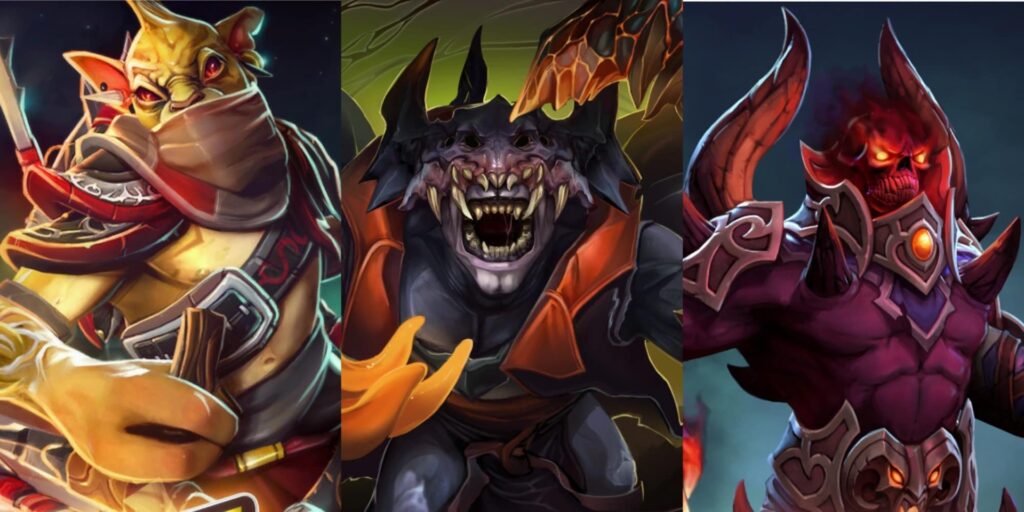
Earthshaker is an amazing hero in the current path and will most likely be contested by cores. However, if he happens to slip by, he’s a strong position four that can provide lockdown and a teamfight ending ultimate.
Bounty Hunter is an ideal support to cores who can already reliably secure kills on their own, and his abilities serve to make it easier and more rewarding. Aside from providing gold for the whole team, Track’s vision is invaluable for all the mobile heroes in the meta, as well as keeping tabs on heroes hiding in the fog looking for a big ultimate, like Sand King.
Hoodwink is in position four, which surged in popularity due to TI14. Her winrate is below average because she’s heavily reliant on skill shots, but that shouldn’t discount her power. She brings long-range AoE disable and utility, a way to amplify magic damage, which is perfect in this meta, and one of the few reliable sources of break. Additionally, she’s evasive and can sling spells from the edge of the fight.
B-tier: Average or situationally strong
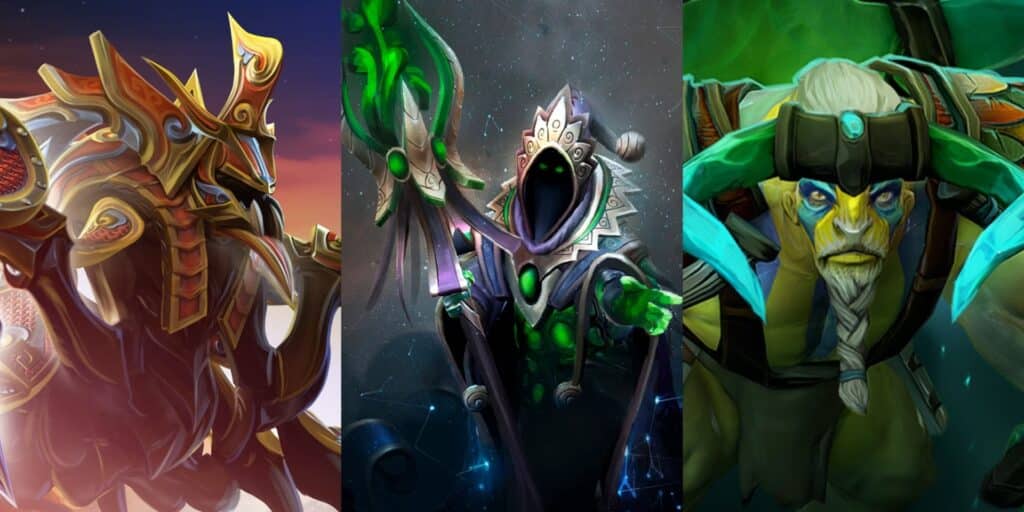
Much of Rubick’s strength depends on whether or not there are good abilities to steal. Abilities like Meathook, Ravage, or Blackhole instantly make him the key player in his team. But without it, Rubick’s base kit is lackluster.
Many of the soft supports in B-tier are here because they’re decent picks who are better as hard supports, and aren’t a detriment when played from the offlane. Heroes like Jakiro, Pugna, Oracle, and Disruptor have a net positive contribution to the team, but you’ll have to first weather the lack of early tempo that a better position four would’ve brought.
Marci and Tusk are staples in pro play, but have below-average win rates in pub. They’re top-tier roamers with explosive kill threats and life-saving abilities. However, these heroes want to keep the pressure up with constant kills, as it’s hard for them to farm and recover when falling behind.
C-tier: Weak, better as five, or for specialists
Many of the soft supports in this tier have dedicated players who can show off the potential of these heroes in the role. But truly skilled players are few and far between, and it’s better to practice in Unranked before diving into ranked with these picks.
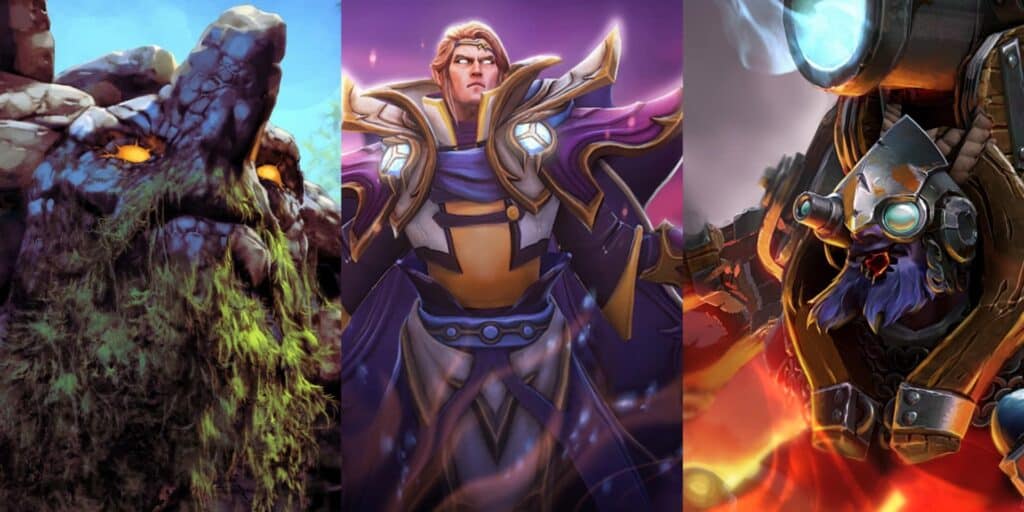
Heroes like Invoker, Tinker, Earth Spirit, Magnus, and Leshrac are a treat to watch when played right, but they can quickly backfire if the player isn’t up to the challenge.
Tiny used to be the quintessential position four in pro play, but nerf after nerf has finally made it harder for him. Despite that, no one can deny how strong a Blink Dagger and Toss can be in the right hands.
Some Dota 2 heroes are better as position five and can find the transition into soft support much more jarring than the supports in the B-tier. Heroes like Undying, Treant Protector, Io, Enchantress, and Chen thrive in the safe lane and can’t set the tempo like a traditional soft support.
D-tier: MMR merchants
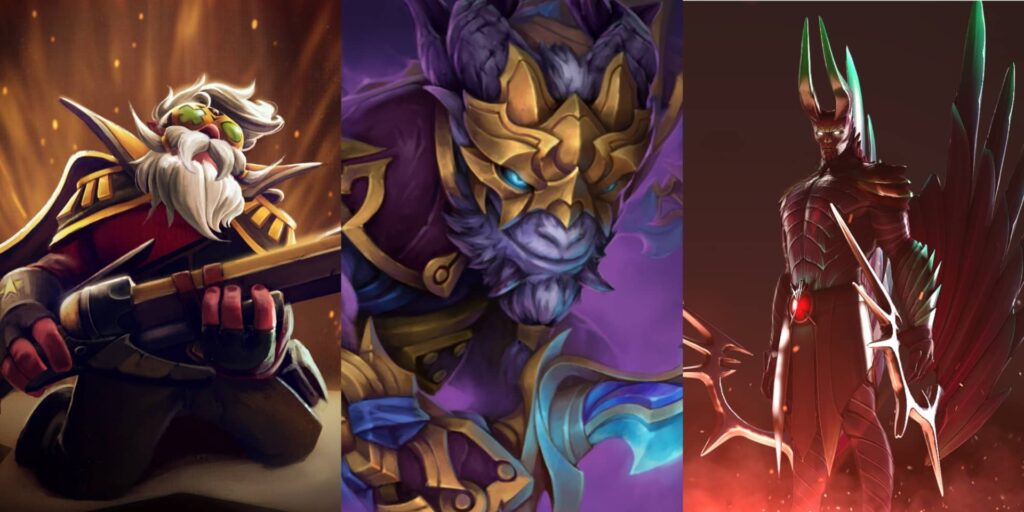
Due to how ranked works in Dota 2, players will often encounter these greedy heroes masquerading as soft support, but they don’t fulfill any of the expectations. These players are often just earning tokens so they can play their main role. It is what it is.
However, if that isn’t the case, picking these soft supports is a detriment to the team and negatively impacts the chances of winning. Heroes like Monkey King, Slark, and Terrorblade see great success in pro play, but that’s a whole different playing field, and these heroes shouldn’t be played a support in ranked pubs.
Alchemist is a contentious support pick as this hero’s game plan is to farm straight for half of the game to feed the team Aghanim’s Scepter to faster power spikes. While decent in theory, this assumes that the enemy team won’t take advantage of a number’s disadvantage to pressure objectives and invade. Leaving the offlane to fend for themself is a recipe for failure and toxicity.
Conclusion
Ideally, soft supports dictate the tempo of the game and are active players who can take space away from the enemy cores. They’re there to convert small picks into bigger objectives, while simultaneously getting enough farm for a core item or two.
This tier list is the current meta reflection of which heroes in Dota 2 can excel as a soft support in ranked pubs, while also keeping in mind the realistic state of how these uncoordinated games would go.
As a support, it’s important to familiarize yourself with S-tier picks, as you’ll often go first in drafts. But get ready to flex into heroes that can better synergize or counter the enemy line-up when the opportunity is there.
FAQs
What is the soft support role in Dota 2?
The soft support, or position four, is the secondary support role in Dota 2 and has a higher farm priority than position five. The soft support is expected to set the tempo of the game through setting up kills and roaming.
What is the difference between hard support and soft support in Dota 2?
While their role may tend to overlap, the difference between the two support positions is that the soft support is expected to rotate through the map more to help other lanes. Additionally, they need to find time to farm up items that can enable their team or counter the enemy.
Who is the best soft support in Dota 2?
The best soft supports in Dota 2 right now are Spirit Breaker, Shadow Shaman, Snapfire, and Clockwerk.
REFERENCES
- Home (DOTABUFF)
- Home (Spectral)
- Radiant vs Dire Win Rate (Pub Matches Since 7.39) (Dota2 ProTracker)
The post Dota 2: Soft Support tier list in 2025: All heroes ranked worst to best in the role appeared first on Esports Insider.






